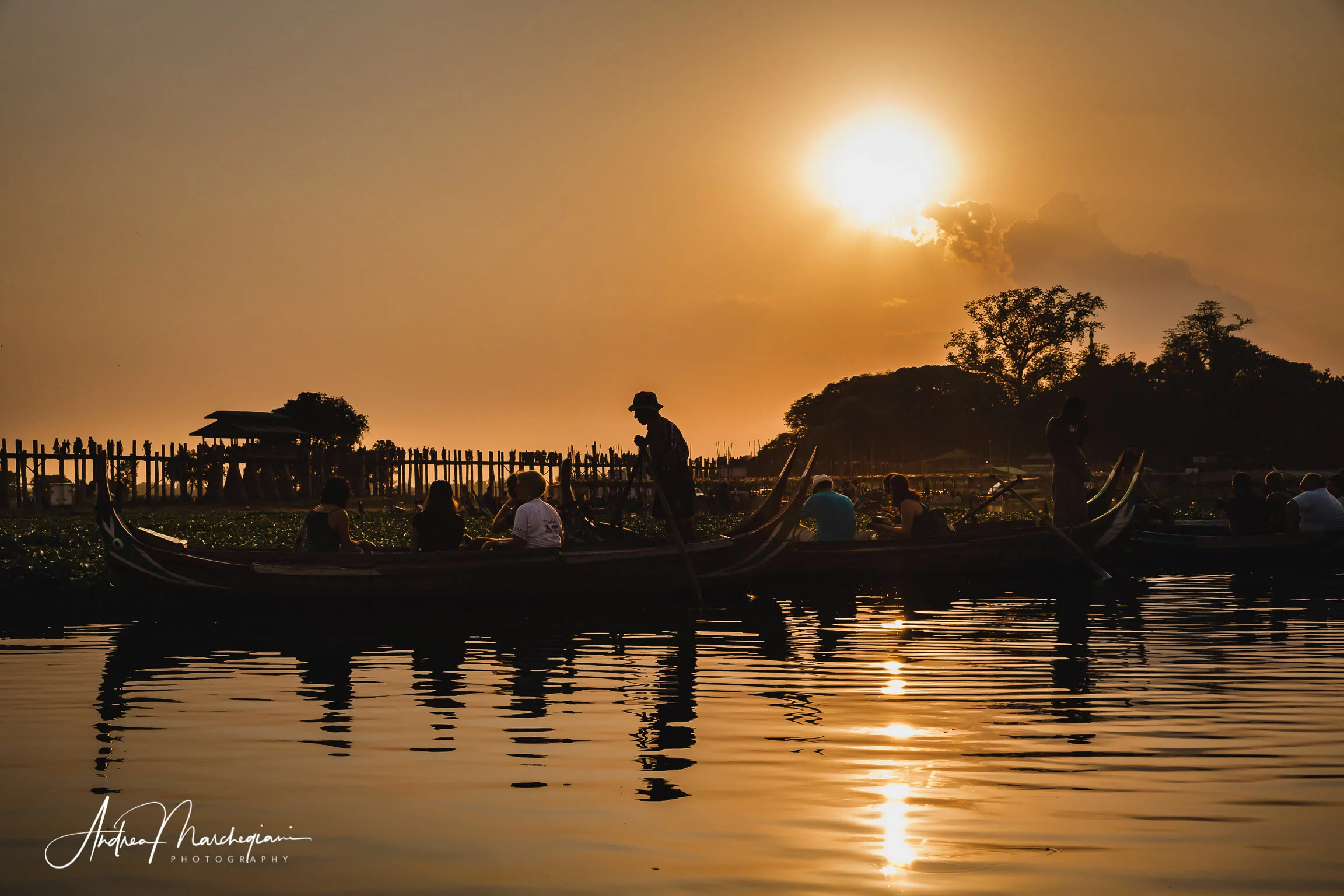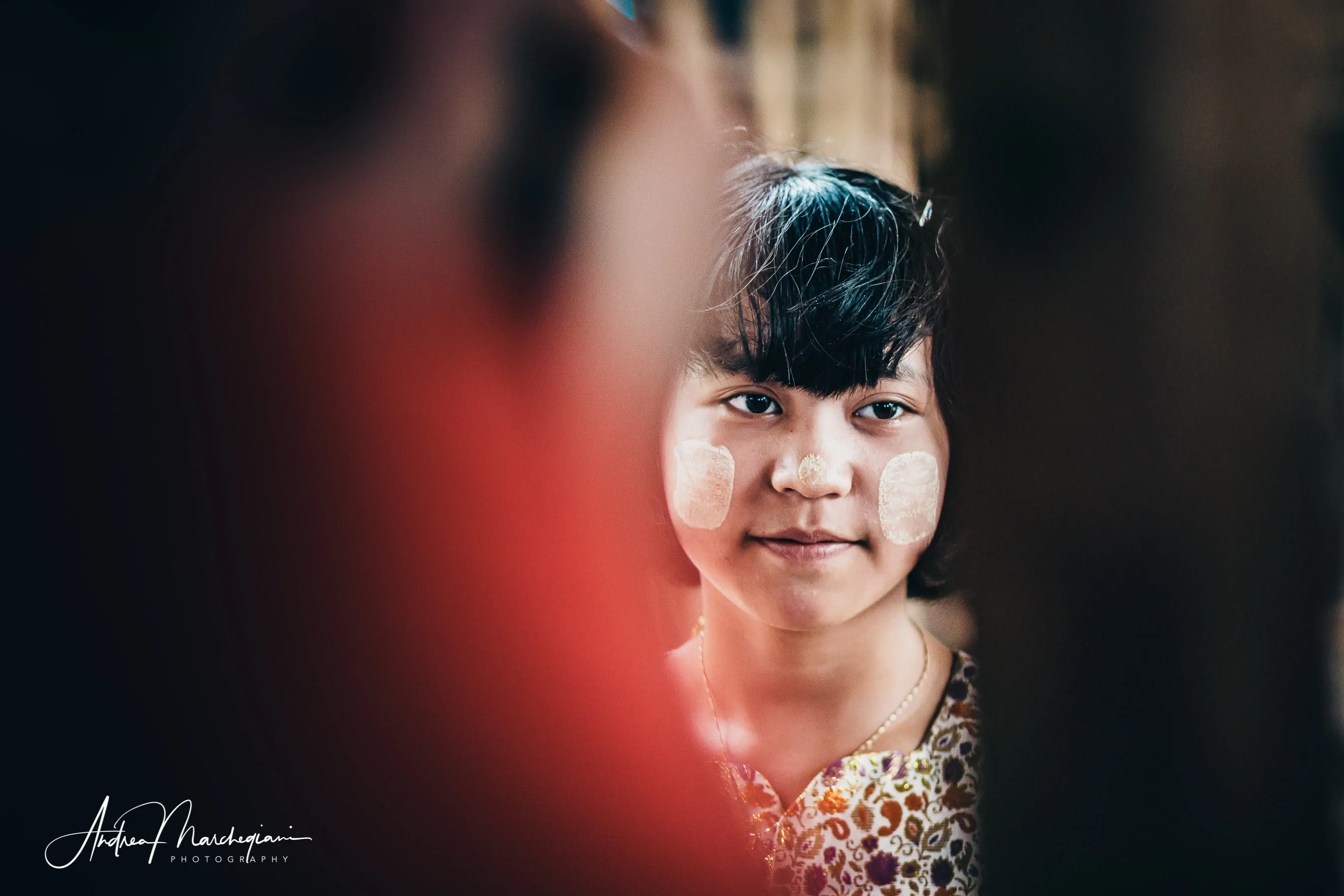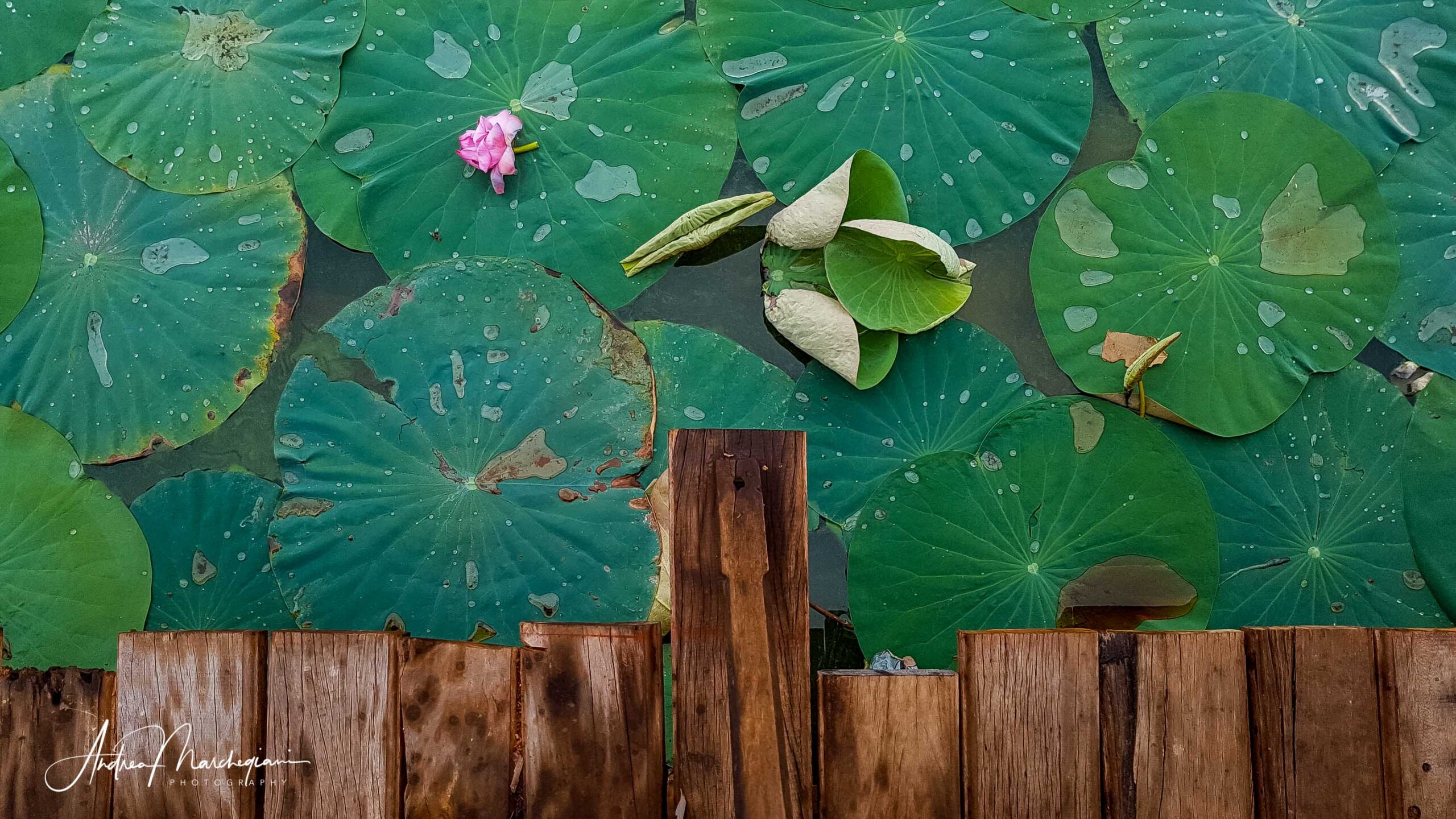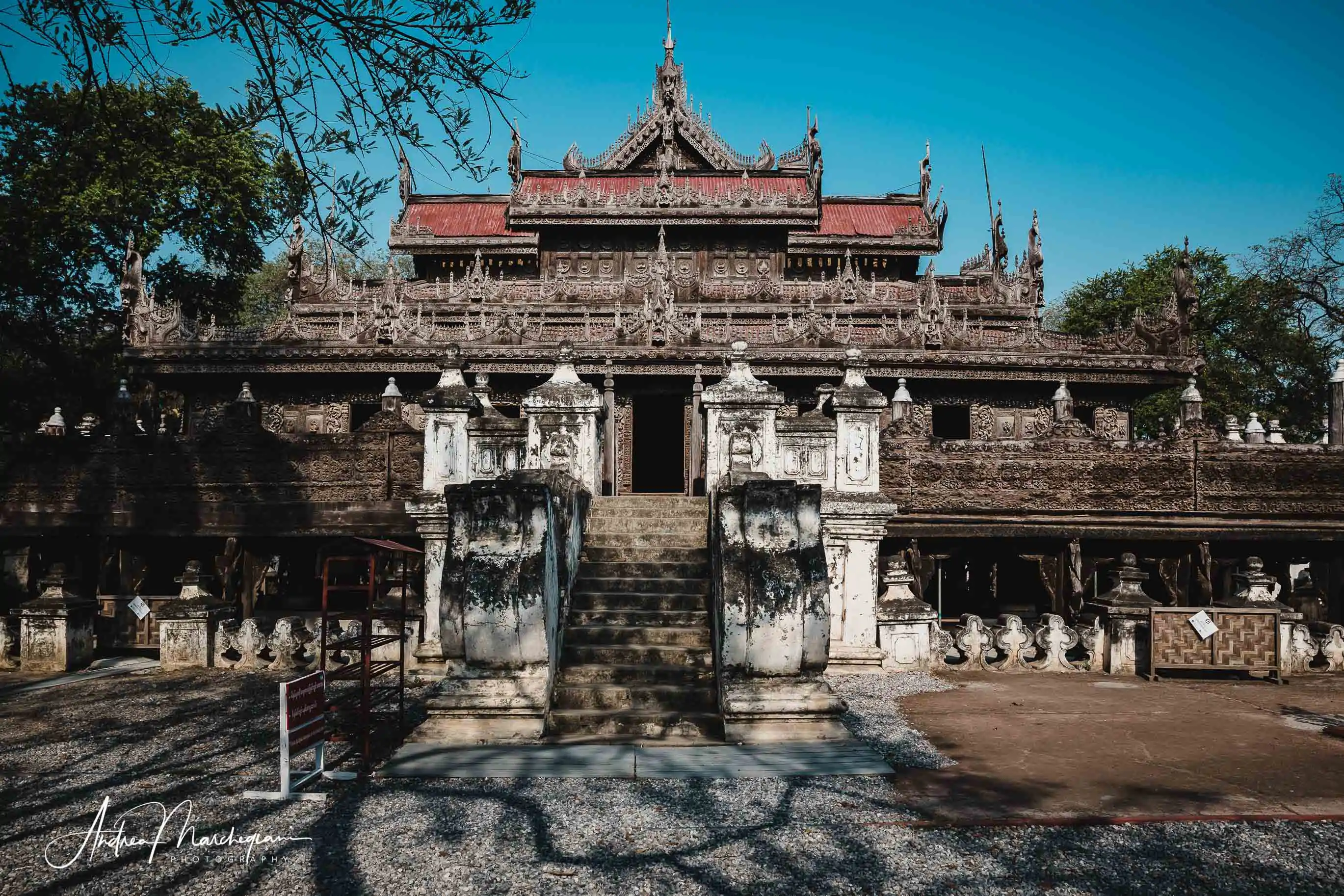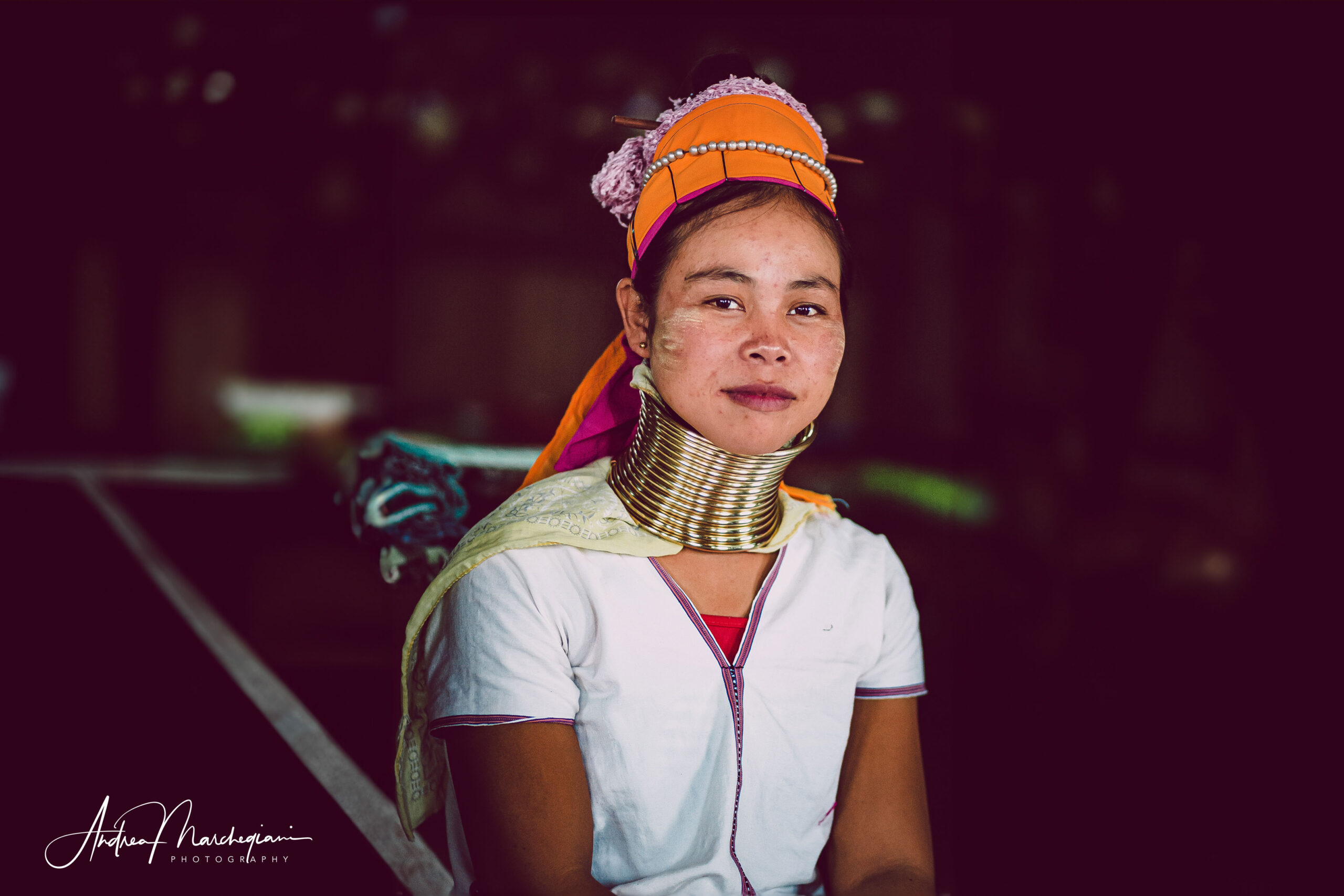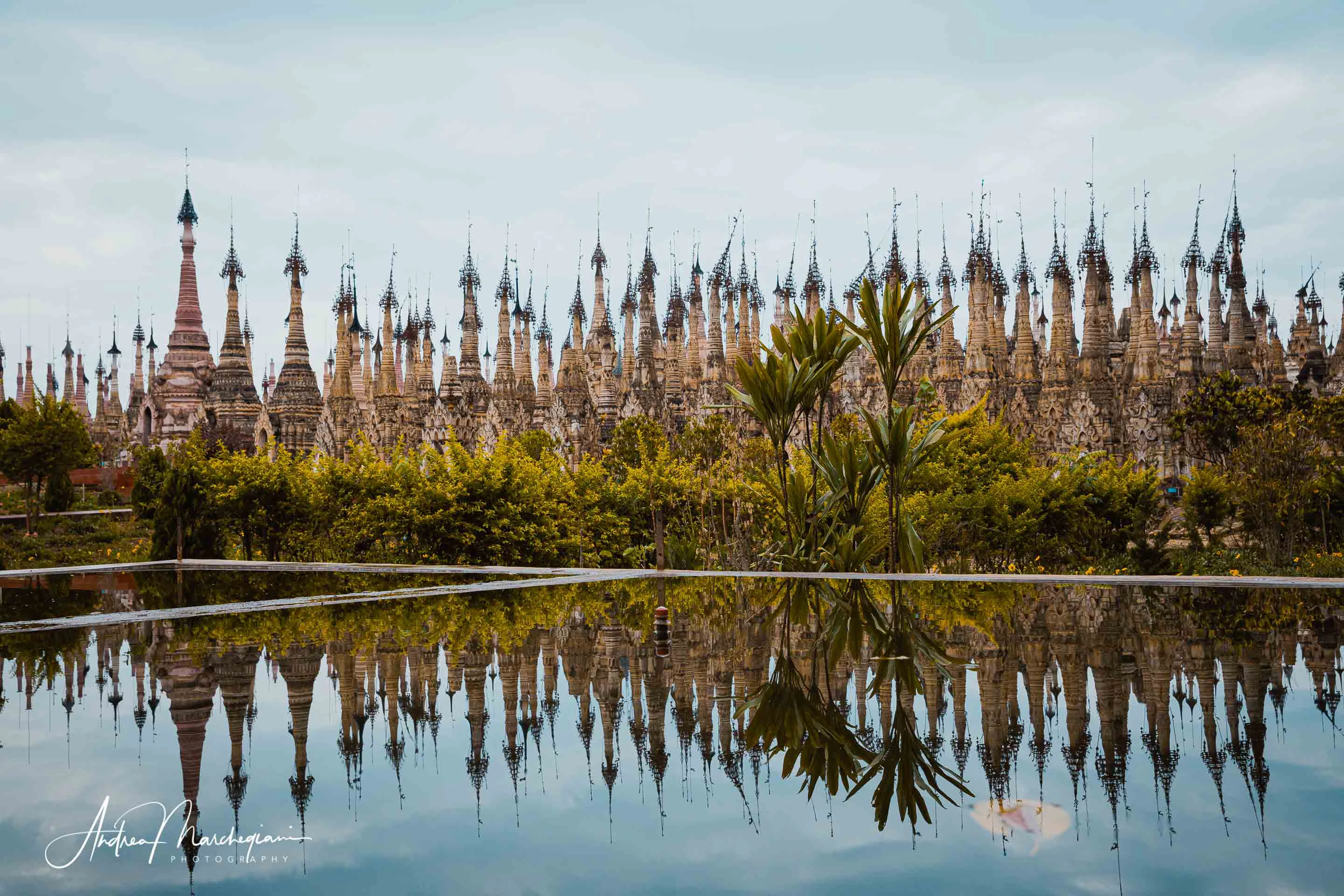
- Home
- Photo Galleries
- Portrait Photography
- Landscape Photography
- Street Photography
- China
- Ethiopia
- India
- Holy Ganges
- Varanasi
- Varanasi Ganga Aarti
- Varanasi, Manikarnika Ghat
- Varanasi Streets & Alleys
- Varanasi Demolition
- Varanasi Fruit Market
- Sarnath
- Brick Kilns
- Tamil Nadu, Chennai & Mamallapuram
- Tamil Nadu, Fort Tirumayam & Madurai
- Tamil Nadu, Tiruvannamalai & Thanjavur
- Kerala, Munnar
- Kerala, Peryiar
- Kerala, Backwaters
- Kerala, Kochi
- Kazakhstan
- Myanmar
- Senegal
- Uzbekistan
- Travel Blog
- China
- Ethiopia
- India
- Tamil Nadu & Kerala
- Varanasi
- Whato to do in Varanasi
- Varanasi Life along the Ghats
- Varanasi Death along the Ghats
- Varanasi Ganga Aarti Ceremony
- Varanasi demolished to honor Shiva
- Varanasi Fruit Market
- “Varanasi, A Journey into the Infinite”
- Sarnath
- All about River Ganges
- Holy Shit. All about Indian Cow Dung
- Clean India Project
- Brick factories
- Tilaka, pundra, bindi: what is the mark on Indian foreheads?
- Kazakhstan
- Mongolia
- Ulaanbaatar, the coldest capital in the world
- What to do in Ulaanbaatar
- Chinggis Khan Museum, 6 floors of Mongolian history
- Gorkhi-Terelj National Park and Bodgkhan Natural Reserve
- Altai Mountains, Things to do in Olgii and Sagsai
- Living with the Eagle Hunters
- Sagsai Eagle Festival
- Navrus Festival
- Xöömej, Mongolian throat singing
- Mongolian Food
- Myanmar
- Senegal
- Uzbekistan
- Latest Posts
- Photography Blog
- About
- Prints
“For centuries, every day, at the crack of dawn, tens of thousands of monks, barefoot, wrapped in orange tunics, come out of their monasteries and go through the streets of the city and villages, in single file, with an empty bowl in their hands. Their arrival is often announced by the sound of a gong beaten by a young bonzo preceding the beggars. People wait at their doorsteps and, with delicate gestures of devotion, offer rice, fruit and flowers to the passing by monks. This is not only a ritual that marks the rhythm of everyday life. It is above all an opportunity for all Buddhists to earn, with their offerings, a better state in the afterlife.”
Share with your friends:
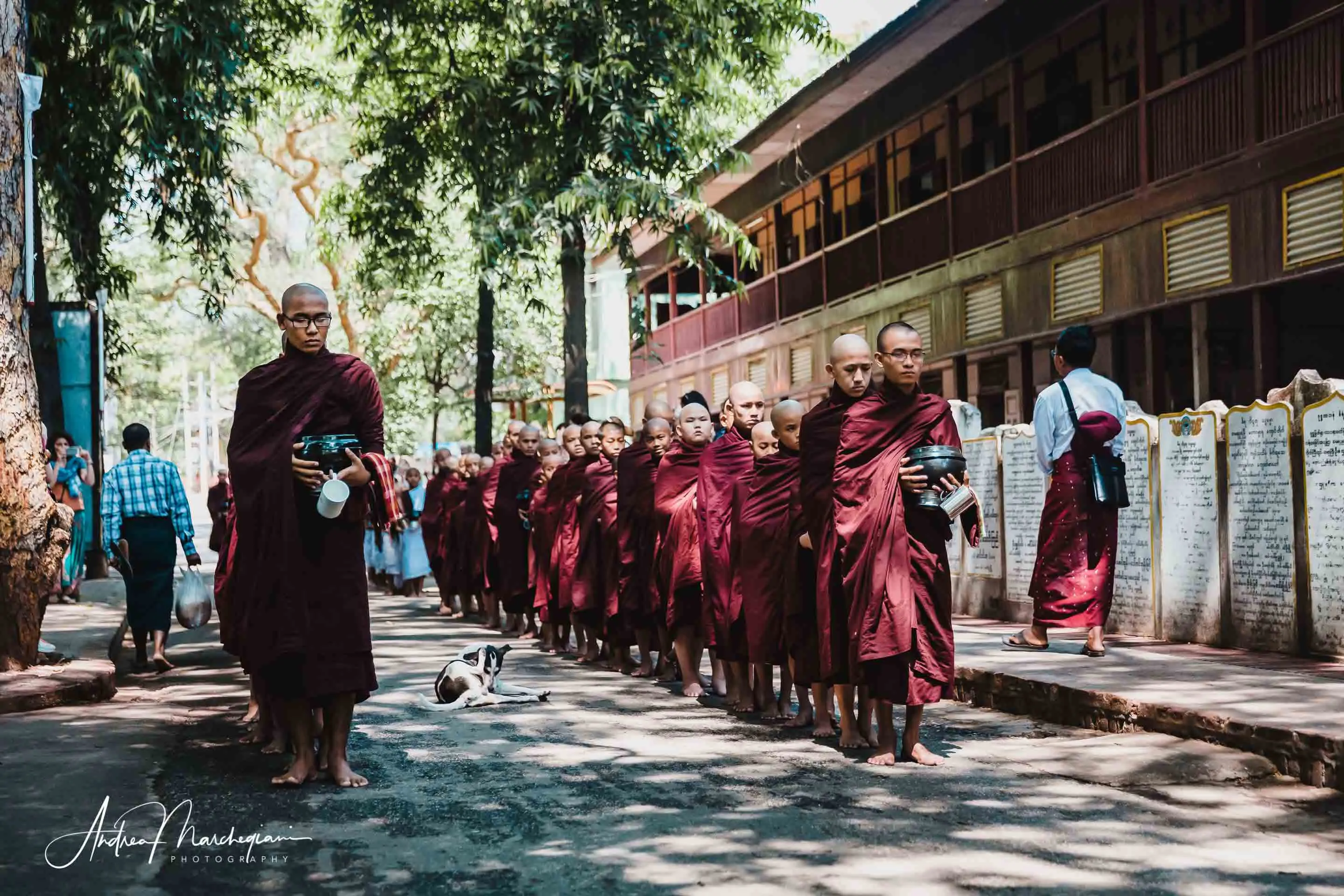
The value of a bonze
With these words, Tiziano Terzani begins the description of one of the most fascinating rites of Burmese society: the lunch of Buddhist monks.
It is difficult for a Westerner to understand the strong identity value that the figure of the bonzo, the Buddhist monk, has in Burmese society. Having a monk son gives prestige to the whole family, because with his life of renunciation to every comfort, with the endless years of study of the sacred texts and especially with the daily practice of meditation, he brings an inestimable value to the whole of society.
Terzani recounts how the military dictatorship that ruled the country until 1996 repressing with violence any form of student protest was brought to its knees, in 1991, by a peaceful group of bonzes. The monks of Mandalay, after yet another armed repression against unarmed citizens, decided not to knock on the military doors anymore, refusing in fact their offers. The dictatorial government felt such a danger for the political stability of the regime that it covered all the monasteries of the country with money, trying to buy the consent.
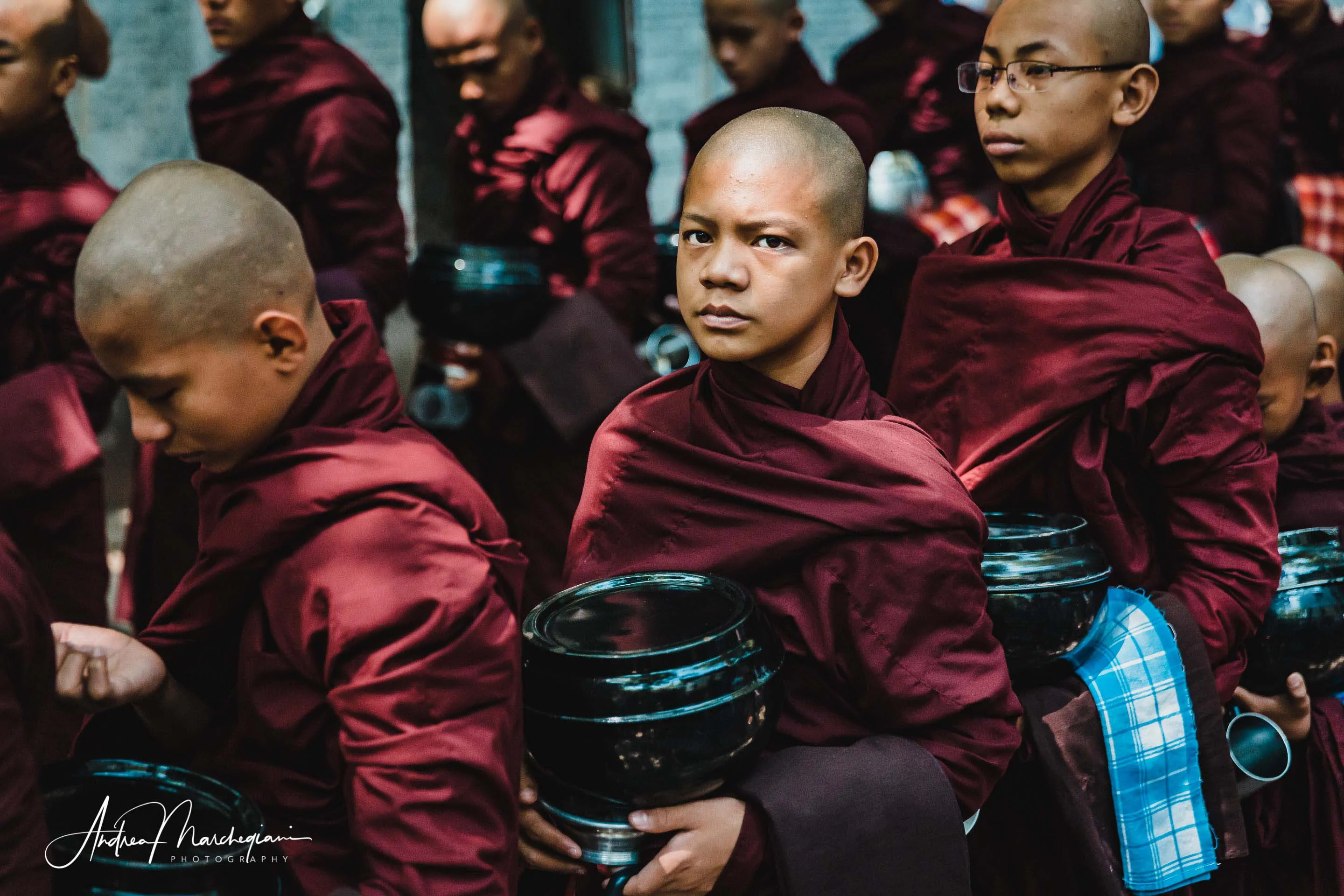
Mahagandayon Monastery in Amarapura
Amarapura is located near Mandalay and it was once the ancient capital of the Burmese kingdom. Here, you can still witness the daily life of thousands of monks, adults and children. Everyday, they gather in Mahagandayon Monastery to eat the meal obtained from the offerings collected in nearby villages.
They walk in silence, in single file, wearing orange tunics and holding glossy black lacquer bowls: they start in small groups, but their number grows after every street corner, finally reaching the size of a small militia at the gates of the refectory.
Mahagandayon Monastery was founded in 1908 and is the largest center of religious studies in the country. It is home to more than a thousand monks, who live according to the strictest teachings of Vinaya monastic code. Every day, the bonzes living in the nearby villages gathered there, too.
The ritual of lunch begins at 10 a.m. when the offerings collected in the village streets are taken to the kitchen, cooked and finally served in the dining room.
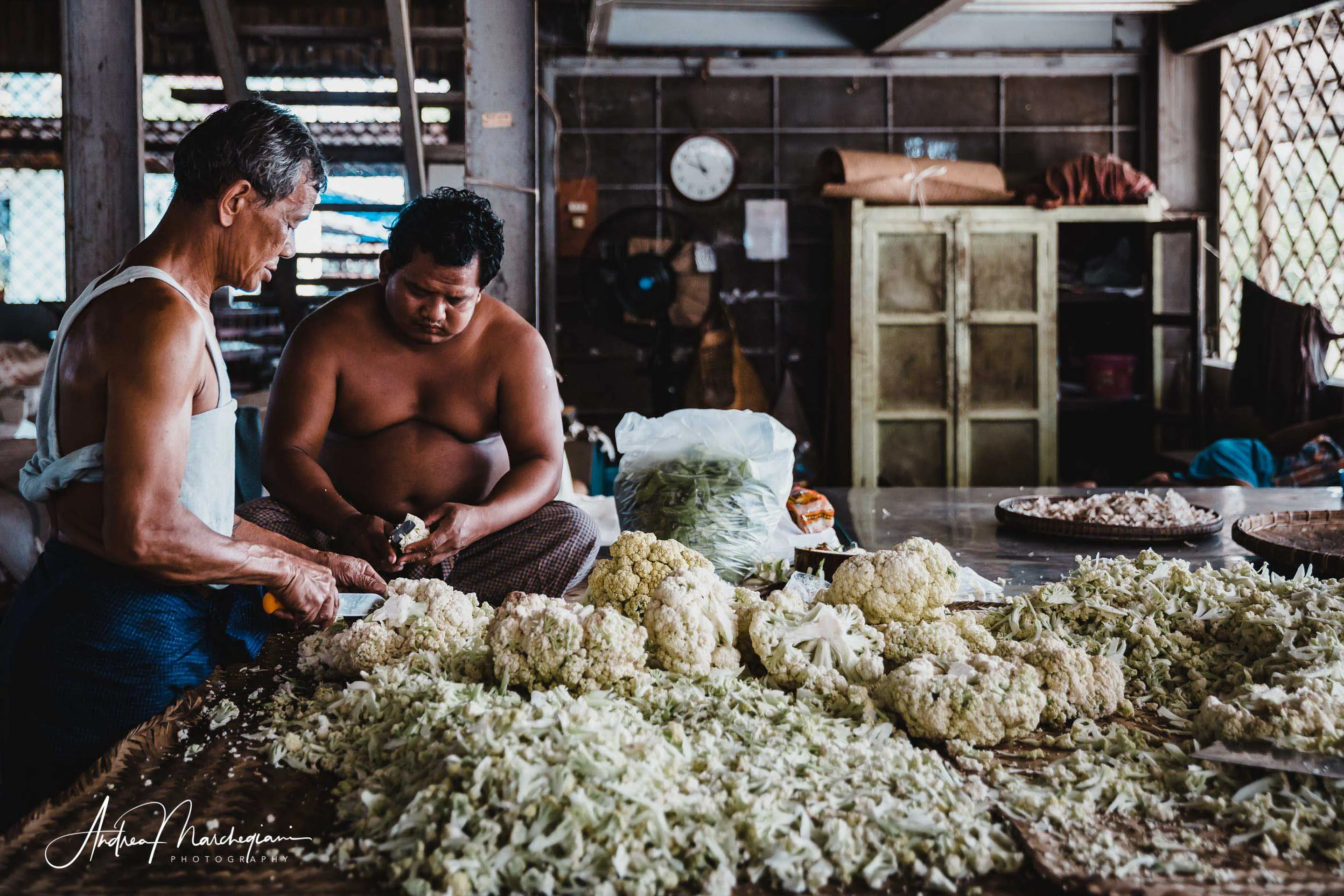
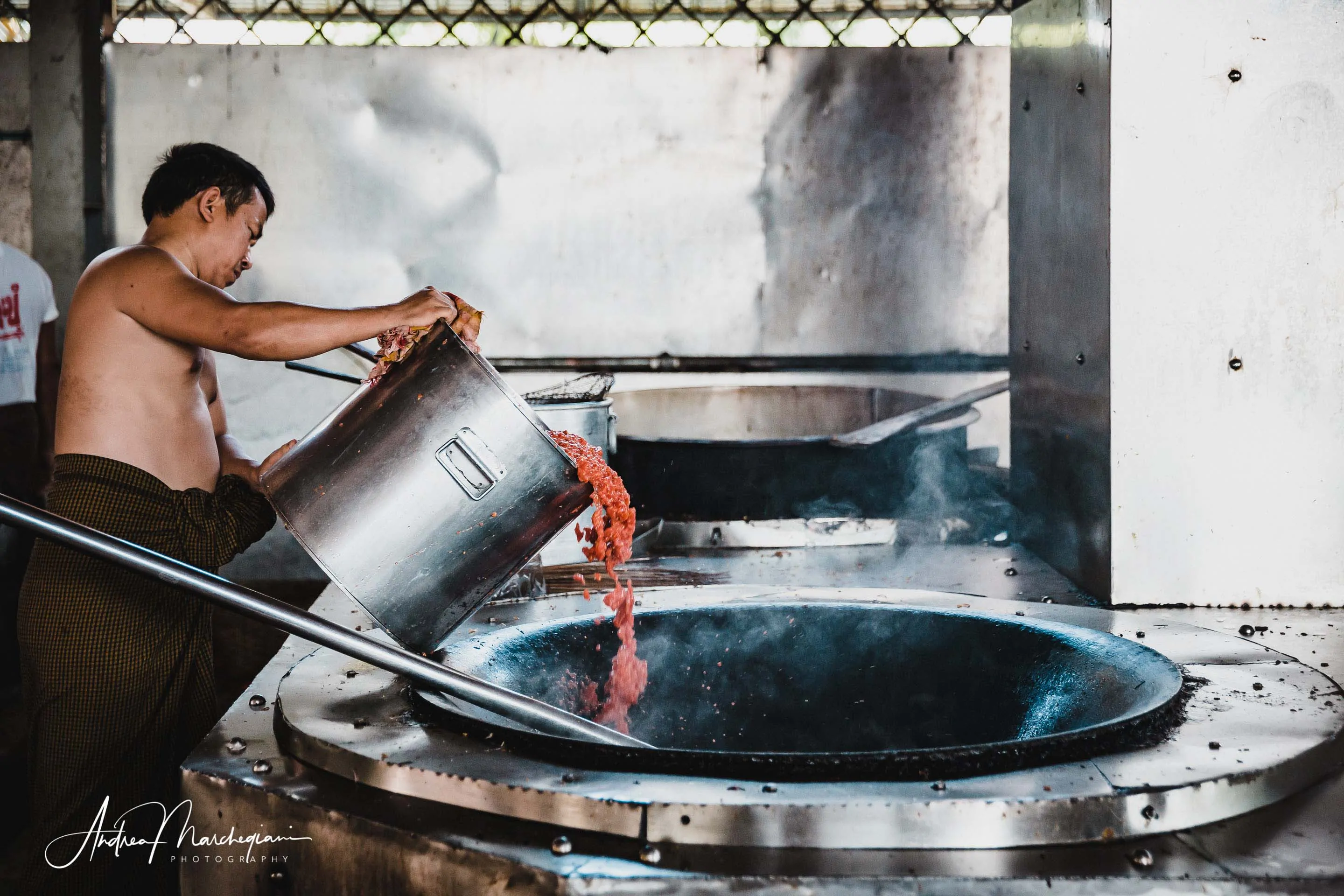
I have the good fortune to visit the kitchens of the monastery: an immense, open space, protected by a solid metal roof where the monks assigned to the service cook impressive quantities of vegetables in containers as big as bathtubs.
When the meal is ready, the monks are arranged in a double row along the monastery main road and reach the common refectory. A monk in charge, with the help of some women, pours the right portion into the bowl. I see the monks slipping into the large dining room and eating in silence (in fact, the younger ones cannot help but exchange a few words in a low voice).
When lunch is over, monks leave the room. I notice many of them hold a still half full bowl. They only ate half of it, and now they donate what is left to the poor children of the village, who are waiting impatiently around the corner.
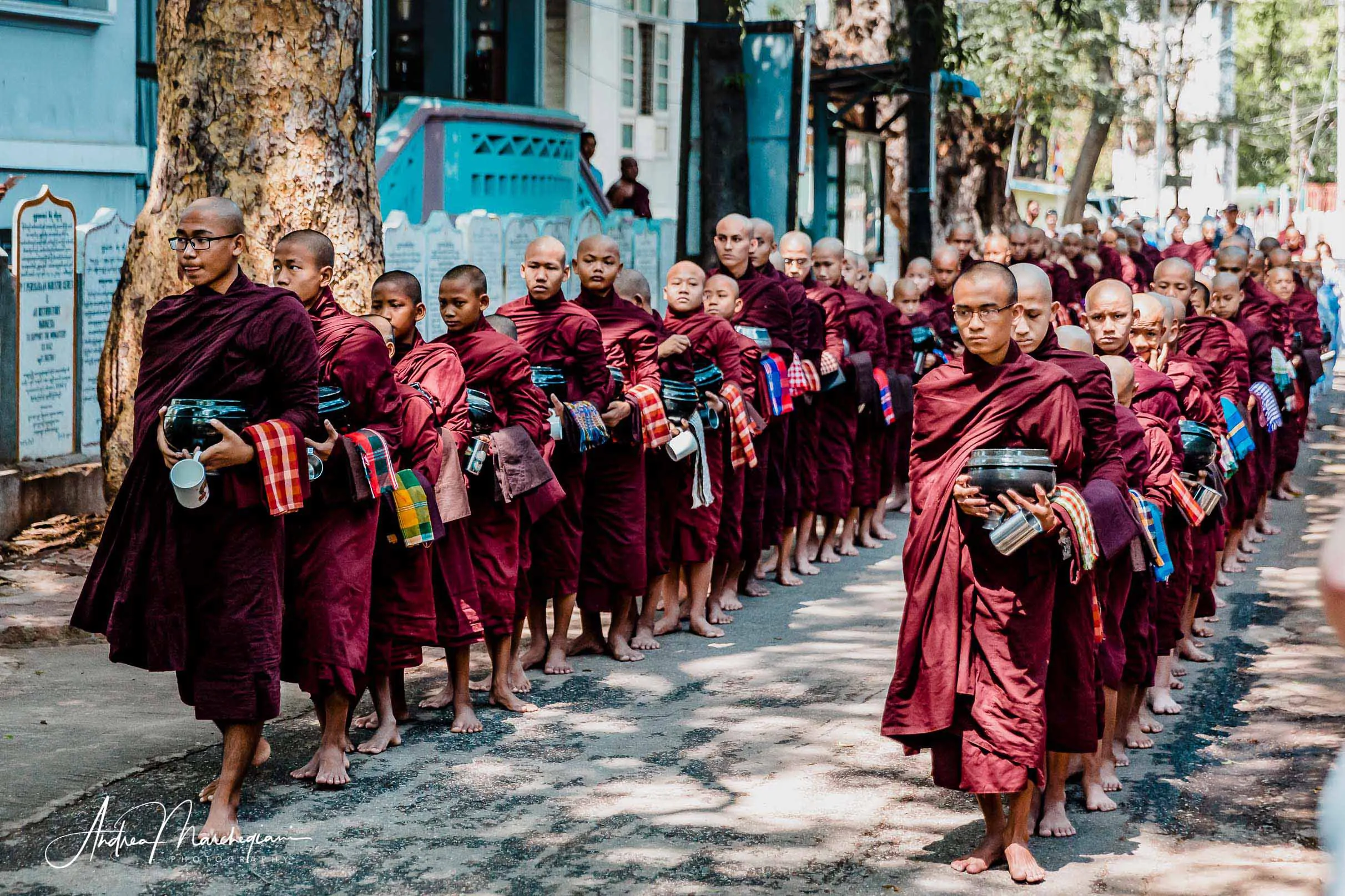
The feeling of mysticism and devotion is unfortunately ruined by the presence of tourists, mostly Chinese, who gather to attend the ritual. Everyone has great respect for the monks but their curiosity and desire to take pictures has a devastating impact on the life of the monastery. I have a feeling that my own presence pollutes the magic of the place. Especially, I suffer from seeing tourists taking bursts of photos of monks, some of whom are still children.
Before coming to Amarapura I had heard enthusiastically about this place, some of my fellow photographers had shown off very suggestive images. I wanted to produce unforgettable shots too, but being faced with such a tourist overcrowding, the desire to protect this world of silence and prayer prevails.
I take very few photos, from a distance, and I decide to make them suffice. Can my presence, along with the other visitors’, affect the monks’ state of mind? What right do we have to disturb their quest for concentration and quiet?
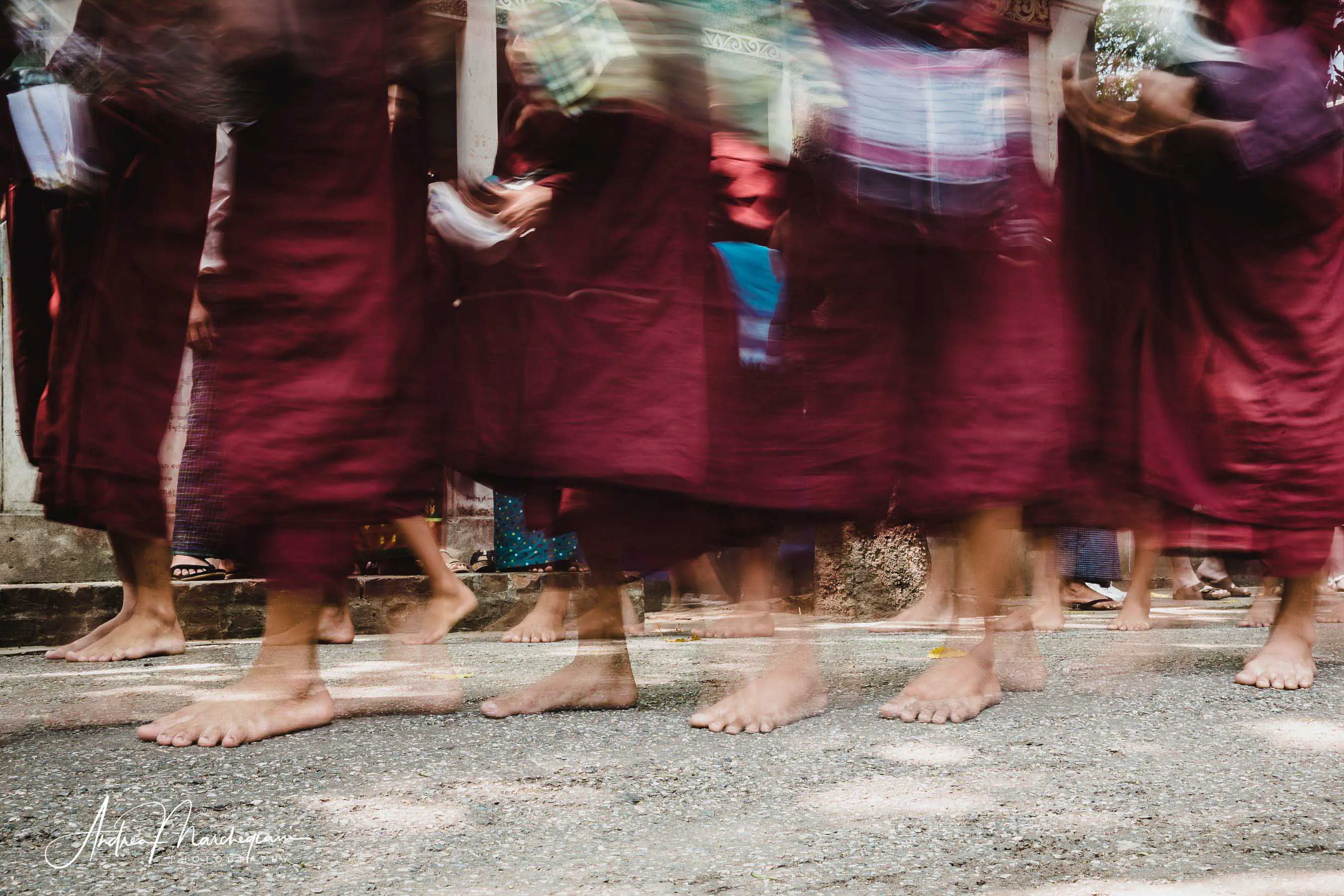
After all, the world does not need another ruthless photographer; what is needed are travellers with a strong ethic, who know how to make themselves invisible. I wanted no monk having to smile at me in embarrassment or looking the other way to avoid my camera. Sure, I may have missed the chance to bring home a memorable shot, but my heart is free from regrets.
I visited the monastery in 2018. I recently read the monastery closed to tourists during meal times. In the largest Burmese monastery monks can eat again a private meal. It is one of the best news of this unpleasant 2020.
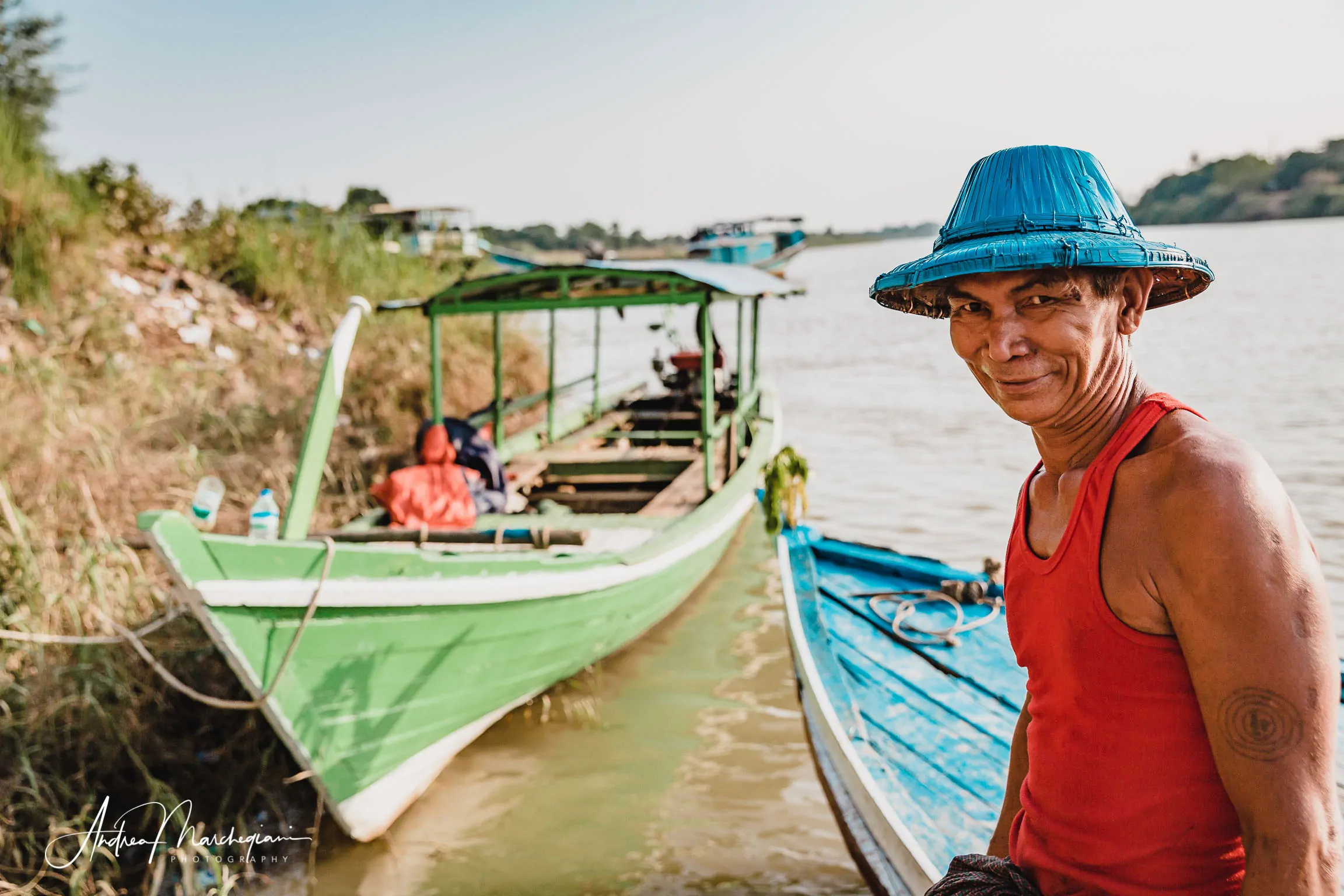
U Bein Bridge, the longest wooden bridge in the world
A few kilometers from Mahagandayon Monastery there is Amarapura’s main attraction -U Bein bridge, the oldest and longest teak bridge in the world.
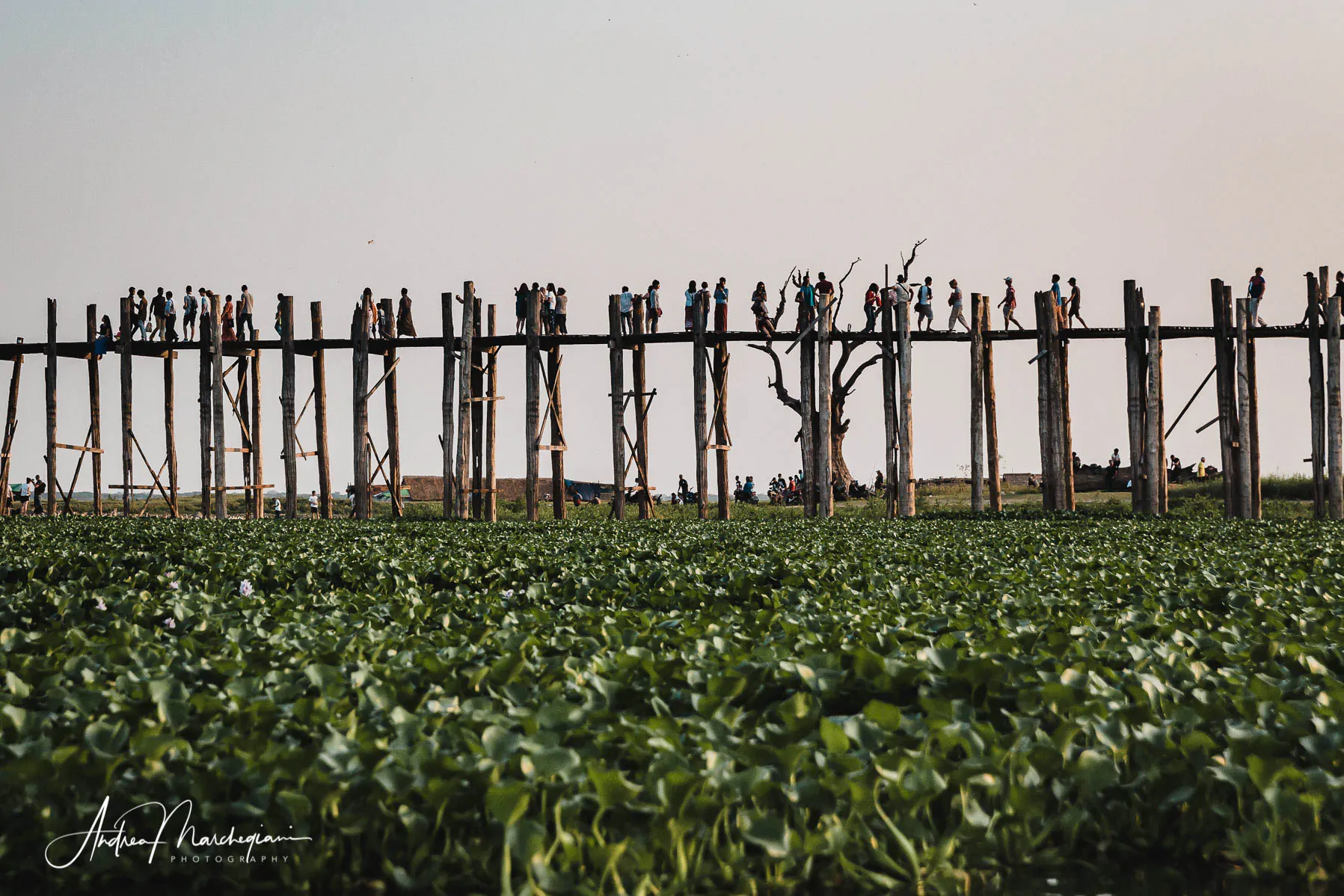
It was built in 1850, when Amarapura was chosen again as the Burmese kingdom capital. The 1.2 km long bridge cuts Lake Taungtaman in two, allowing pedestrians to cross it easily. Incredibly, it was made entirely from wood that once formed the royal palace of Ava.
1,086 teak pillars support a gallery without handrails, which makes the view of pedestrians even more impressive.
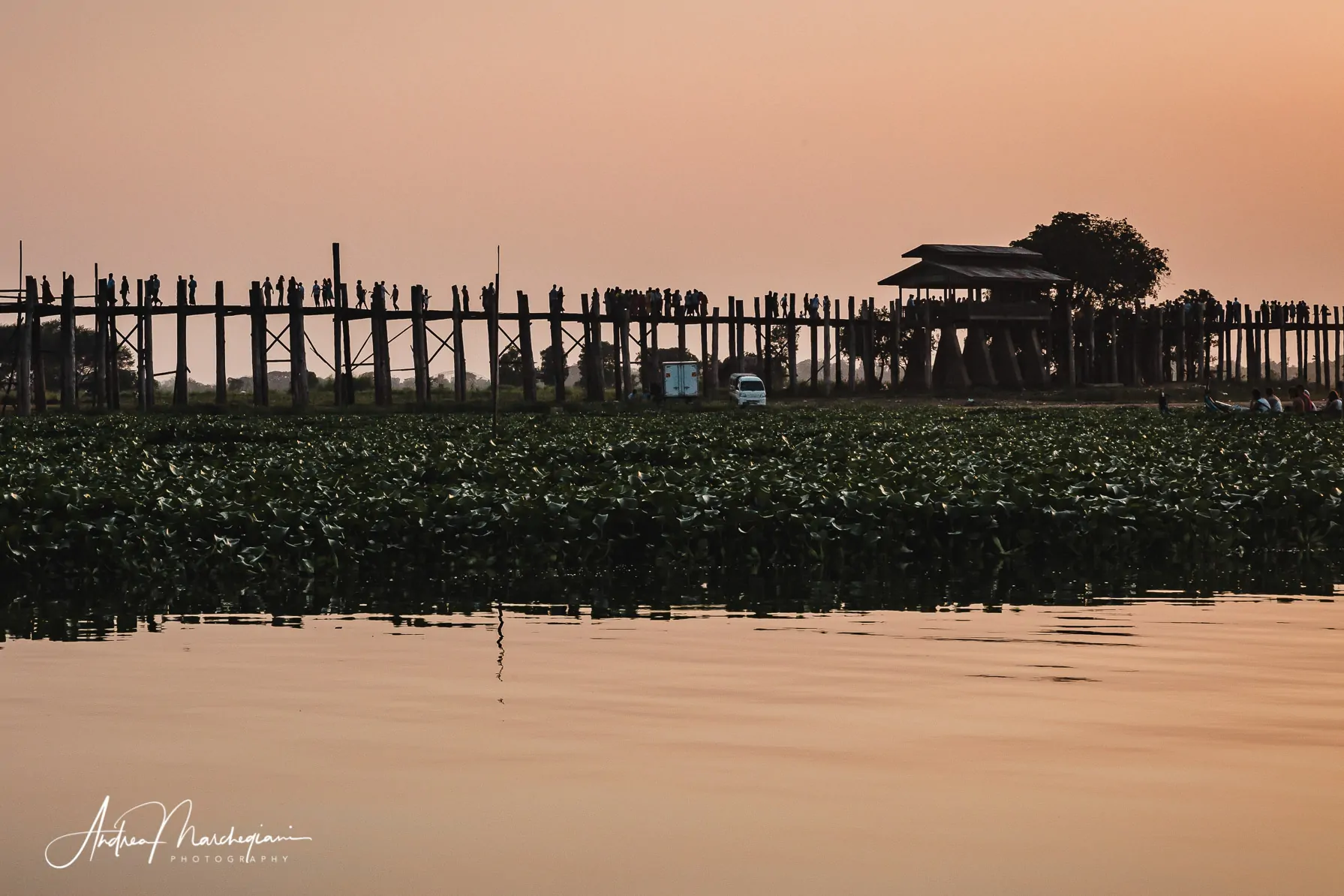
I visit it at sunset, when the backlight turns it into a giant styled wreck, looking like a prehistoric centipede.
A boatman offers me a short crossing of the lake, in order to admire the sunset from a privileged position. It is April and the dry season has significantly lowered the water level of the lake. Expanses of weedy water lilies act as footrests for the thin structure of the bridge, which extends elegantly from one shore to the other.
I stand in silence watching the sun go down on the horizon, my mind is empty, my spirit is satisfied. Suddenly, almost taking the run-up, the sun plunges into the waters of the lake and disappears. I forget to photograph the moment: Amarapura has asleep the photographer in me and awakened the monk I might have been in another life.
